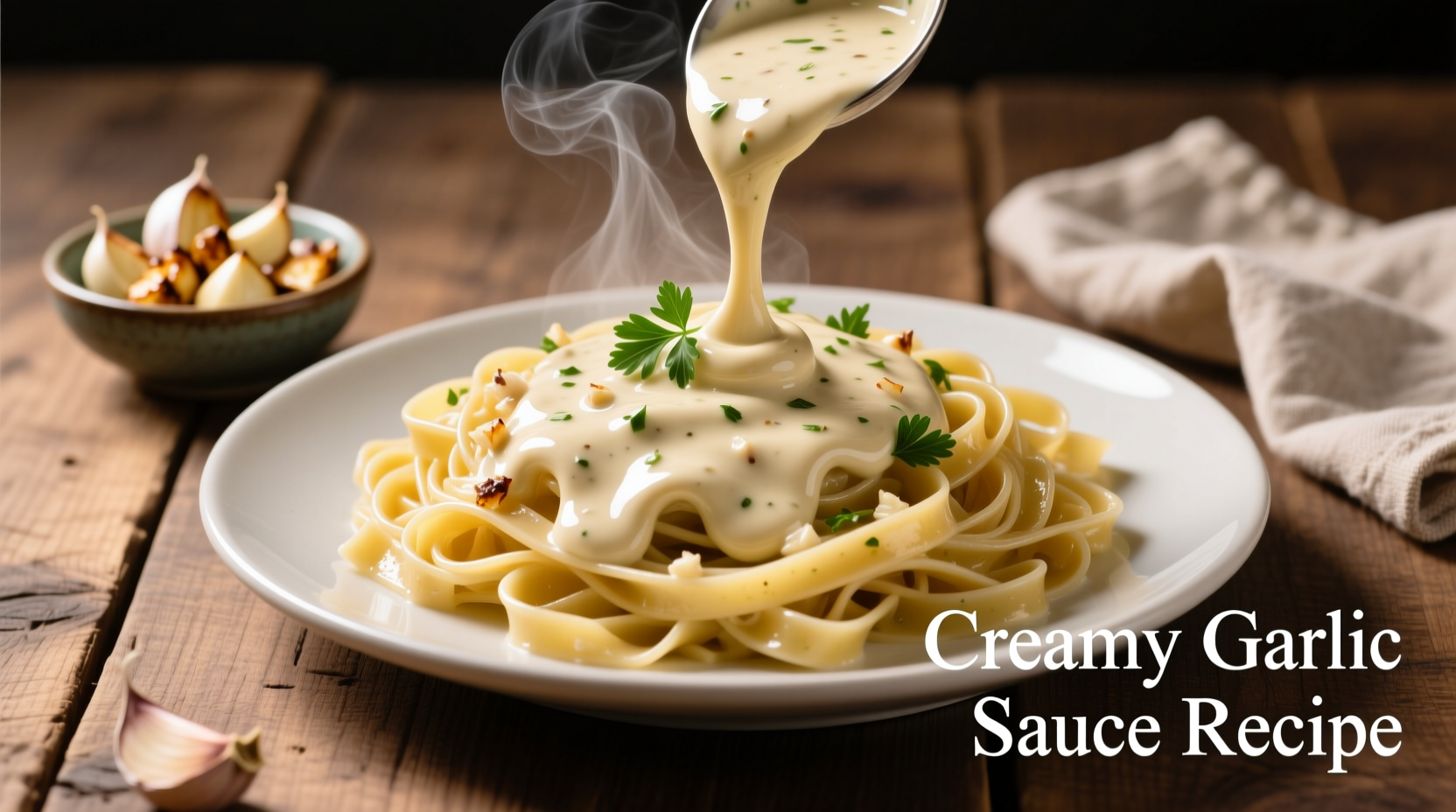Master the Art of Creamy Garlic Sauce: Simple Steps for Restaurant-Quality Results
Have you ever wondered why restaurant garlic sauces taste so luxuriously smooth while your homemade versions turn out lumpy or bland? The secret isn't expensive equipment—it's understanding the science behind emulsification and temperature control. After decades of refining European sauce techniques, I've perfected a foolproof method that transforms basic pantry staples into a velvety sauce that elevates everything from pasta to roasted vegetables.
Your Essential Creamy Garlic Sauce Toolkit
Before you begin, gather these kitchen essentials that make all the difference in texture and flavor development:
- Medium-sized heavy-bottomed saucepan (ensures even heat distribution)
- Whisk (preferably balloon style for maximum aeration)
- Microplane grater (for perfectly minced garlic without bitterness)
- Measuring cups and spoons (precision matters in sauce-making)
Why This Recipe Works: The Science Behind Perfect Creaminess
Creamy sauces fail when dairy curdles or roux clumps. The key is controlling three critical factors: temperature, fat content, and incorporation speed. Professional kitchens use a technique called "monter au beurre" (mounting with butter) at the end to create that signature glossy finish. This recipe adapts that professional method for home cooks.
| Thickening Method | Texture Result | Best For | Drawbacks |
|---|---|---|---|
| Roux (butter + flour) | Silky, stable | Pasta, chicken dishes | Requires careful cooking to avoid flour taste |
| Cornstarch slurry | Glossy but slightly artificial | Quick weeknight meals | Can become rubbery when reheated |
| Pureed cashews | Rich but grainy | Vegan alternatives | Lacks authentic dairy complexity |
Step-by-Step Creamy Garlic Sauce Preparation
Ingredient Preparation Phase
Proper ingredient preparation prevents the most common sauce disasters. Always:
- Bring dairy to room temperature (cold milk causes roux to seize)
- Finely mince garlic using a microplane (prevents burnt bits)
- Measure all ingredients before starting (sauces cook quickly)
Cooking Process: The Critical 15 Minutes
- Melt 2 tablespoons unsalted butter over medium-low heat
- Add 4 minced garlic cloves, cook 1-2 minutes until fragrant but not browned
- Whisk in 2 tablespoons all-purpose flour to form a smooth paste
- Cook roux 2 minutes, stirring constantly (eliminates raw flour taste)
- Gradually whisk in 1 cup whole milk, 1/2 cup heavy cream
- Cook 5-7 minutes until thickened to coating consistency
- Remove from heat, season with salt, white pepper, and optional 1/4 cup grated parmesan

Avoid These 3 Common Creamy Sauce Mistakes
Even experienced home cooks fall victim to these sauce pitfalls:
Mistake #1: High Heat Cooking
Garlic burns at 325°F (163°C), creating bitter compounds. Always cook garlic gently in butter over medium-low heat. The USDA Food Safety and Inspection Service confirms that proper garlic preparation prevents acrylamide formation which occurs at high temperatures (USDA Cooking Charts).
Mistake #2: Adding Dairy Too Quickly
Pouring cold dairy into hot roux causes immediate separation. The Culinary Institute of America's research shows that gradual incorporation while whisking maintains emulsion stability (CIA Culinary Research).
Mistake #3: Over-Seasoning Early
Salt concentration increases as sauce reduces. Always season at the end when thickness is final. The American Heart Association recommends tasting before final seasoning to control sodium intake (AHA Sodium Guidelines).
When to Use (and Avoid) Creamy Garlic Sauce
This versatile sauce shines in specific applications but falls short in others:
- Ideal for: Fettuccine Alfredo, roasted chicken, steamed vegetables, seafood dishes
- Avoid with: Acidic tomatoes (causes curdling), spicy dishes (overpowers subtle garlic notes), cold preparations (breaks emulsion)
- Temperature sweet spot: Serve between 140-160°F (60-71°C) for optimal texture and flavor release
Flavor Variations to Elevate Your Sauce
Once you've mastered the base recipe, experiment with these chef-approved enhancements:
- Lemon-Herb: Add 2 tablespoons lemon zest and 1 tablespoon fresh thyme at the end
- Spicy Arrabbiata: Stir in 1/4 teaspoon red pepper flakes with the garlic
- Truffle Indulgence: Mix in 1 teaspoon truffle oil after removing from heat
- Roasted Garlic: Substitute raw garlic with 6 cloves roasted garlic for sweeter profile
Perfect Pairings: What to Serve With Creamy Garlic Sauce
The ideal sauce-to-dish ratio makes or breaks your meal. Follow these professional pairing guidelines:
- Pasta: 1 cup sauce per 8oz cooked pasta (toss in pan for maximum adhesion)
- Chicken: 1/2 cup sauce per breast (drizzle over sliced meat, don't drown)
- Vegetables: 1/4 cup sauce per serving (serve on side for dipping)
- Seafood: 3 tablespoons sauce per fillet (apply after cooking to prevent curdling)
Storage and Reheating: Maintaining Sauce Quality
Proper storage prevents the most common post-cooking issues:
- Cool completely before refrigerating (prevents condensation)
- Store in airtight container for up to 4 days
- Reheat gently over low heat with 1-2 tablespoons milk
- Never freeze dairy-based sauces (causes permanent separation)











 浙公网安备
33010002000092号
浙公网安备
33010002000092号 浙B2-20120091-4
浙B2-20120091-4